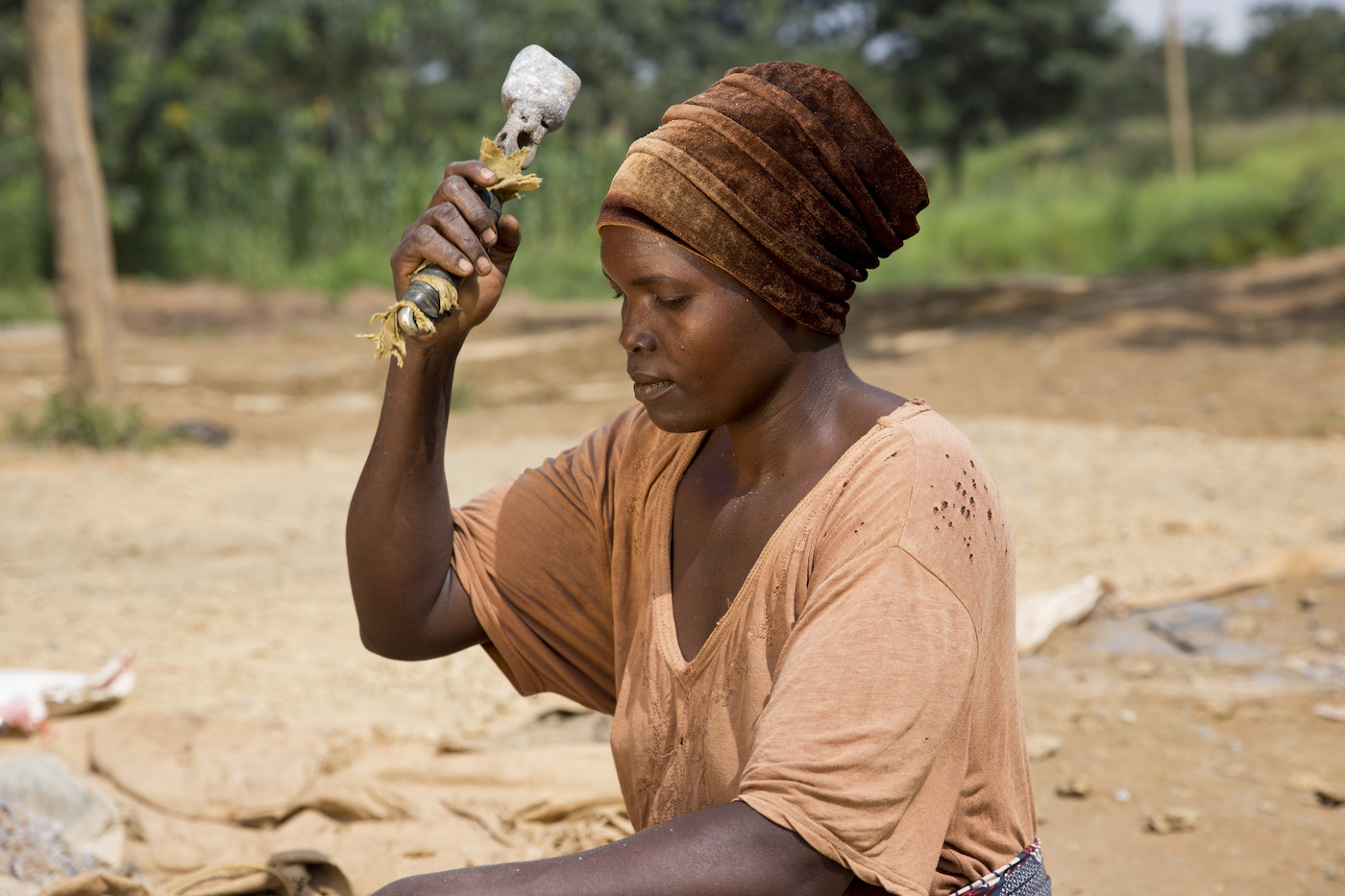The artisanal and small-scale mining (AGSM) workforce in Kenya is estimated to be 10 times that of large-scale gold mining operations in the country and supports the livelihoods of up to 800,000 people. This sub-sector also makes significant contributions to Kenya’s economy:
- The Ministry of Mining and Petroleum estimates that Kenya’s entire mining sector produces more than 34 tons of gold per year.
- A report from the Alliance for Responsible Mining estimates that artisanal and small-scale gold mining contributes about US$224 million to the country’s economy, representing over half the entire mining sector’s contribution to the GDP.
- Artisanal and small-scale mining accounts for 2 percent of Kenya’s total export earnings (MICA).
Despite its contributions to the economy and increasing importance, the sub-sector remains largely informal. This results in miners and their families bearing immense risk in trying to eke out a living. The widespread use of mercury and dangerous, unhealthy working conditions, as well as the presence of illegal child labor, and environmental risks continues to attract the attention and action from key stakeholders including the Kenyan government, which is making strides and investments in the sub-sector since the enactment of the Mining Act, 2016.
The previous Mining Act, 1993 did not recognize artisanal and small-scale gold mining as a type of mining operation, which contributed to the informality in the sub-sector. Operating outside of the country’s legal framework presented complex challenges, and the lack of formalization and regulation increased the environmental and social risk.
As a result, artisanal and small-scale gold mining has been characterized by low recovery of gold due to improper practices, lack of access to credit and finance, inefficient equipment, and limited access to land and other productive inputs/resources.
Formalizing Artisanal and Small-scale Gold Mining for the Benefit of All
The government of Kenya envisions that the entire mining sector’s contribution to the GDP will grow to represent 10 percent by 2030 through value addition and the implementation of new policies (PACT). To this end, the Mining Act, 2016 aims to streamline the country’s mining sector, contribute to environmental conservation and sustainable development.
The Act addresses several gaps in the previous legislation and aligns the sub-sector with global trends to spur development and attract investment. Similarly, Kenya signed onto the Minamata Convention on Mercury to eliminate mercury, formalize artisanal and small-scale gold mining, and promote good mining practices and occupational health and safety in mines.
The Act presents an opportunity for artisanal and small-scale gold miners to truly benefit from their contributions. More importantly, it has paved the way for the government and stakeholders to address some of the challenges in the sub-sector
Introducing self-regulation for a sustainable mining sub-sector
Solidaridad is implementing RECLAIM Sustainability! Programme, a five year programme funded by the Ministry of Foreign Affairs of the Netherlands in partnership with Center for Environmental Justice and Development. Earlier this year, the RECLAIM Sustainability! Gold Project supported the development of a Self-Regulatory Framework for artisanal and small-scale gold miners.
The Self-Regulatory Framework is a joint commitment from all in the sub-sector and a commitment to raising and maintaining standards and best practices. This framework was developed through a consultative process with miners, miner organizations and representatives from artisanal mining committees in Kakamega, Migori and Narok counties. The development of the framework was led by representatives of the Migori Miners’ Association, Kakamega Miners’ Association, Farmers’ of Gold Group – Lolgorian. During the forums, ASGM actors reviewed, validated and adopted the Self-Regulatory Framework.
To facilitate adoption and compliance with the framework, miners agreed to adopt a coordinated approach for enforcement and committed to work closely with law enforcement agencies, and other stakeholders. Miners also established a multi-stakeholder regional committee to champion (and facilitate) compliance with the framework, and advocate for action on issues affecting miners. Resilience teams (Migori and Narok) were created to oversee health and safety and conflict resolution.
Self-Regulation; One Step Closer to Formalization of Artisanal and Small-scale Gold Mining
Over the next three years, the RECLAIM Sustainability! Gold project will work with key actors and the newly established artisanal and small-scale gold mining structures to promote mining practices that are responsible, transparent, sustainable and inclusive. Specifically, the programme will support efforts to:
- Sensitize artisanal and small-scale gold mining communities on relevant laws, regulations and procedures.
- Lobby and advocate for favorable policies, legalization, and formalization.
- Develop digital solutions.
- Raise awareness of best available technologies and environmental practices.
- Develop and promote marketing and supply-chain best practices.
- Promote linkages and partnerships.
- Promote good governance and financial practices.
- Facilitate self-regulation through innovative checks and balances systems.
- Develop and Implement self-monitoring and evaluation for members’ compliance.
It is envisaged that formalization of artisanal and small-scale gold mining will increase miners’ (and workers’) access to tools and resources, and further improve their understanding of the industry. Importantly, it will facilitate fair value distribution and support a transition to sustainable mining practices.

